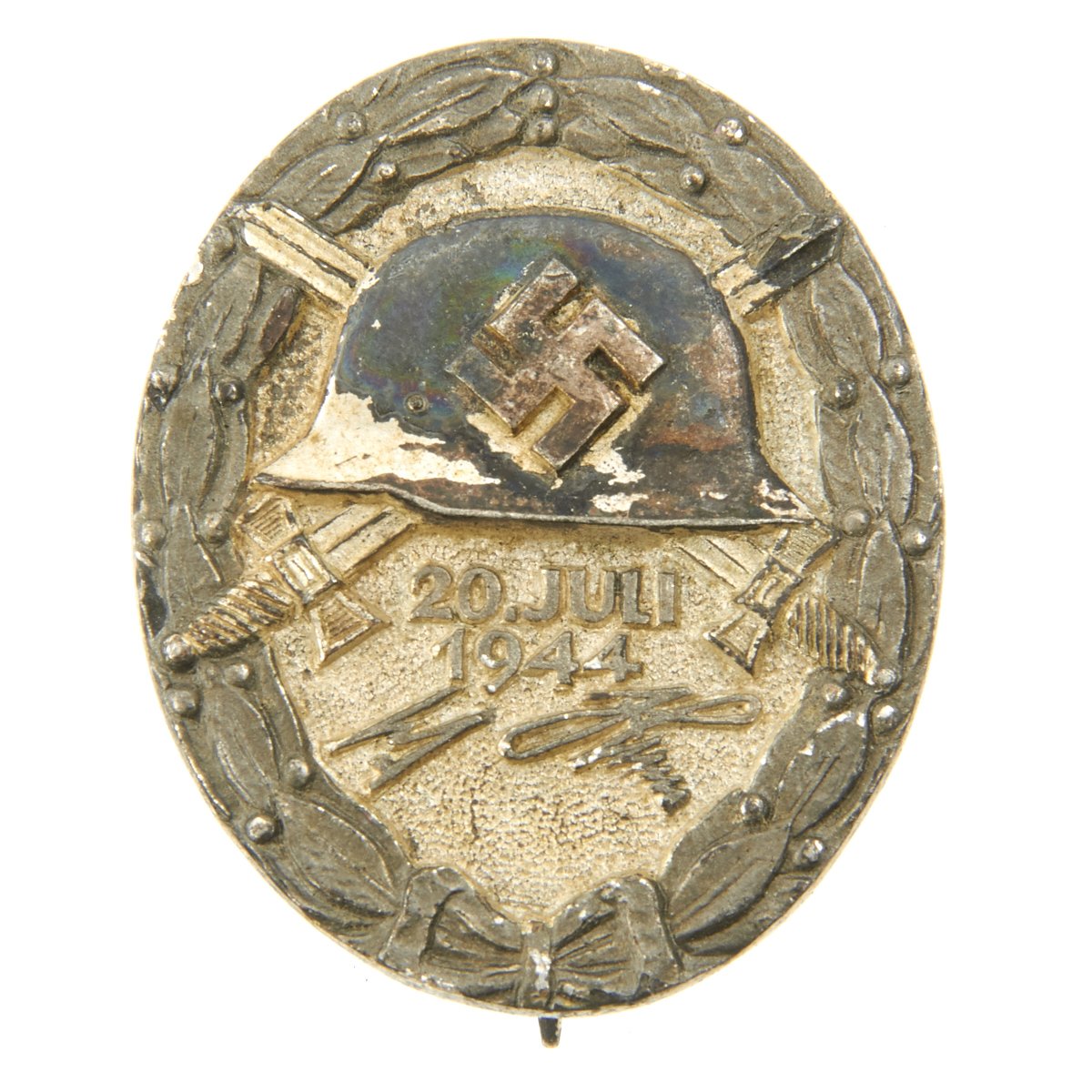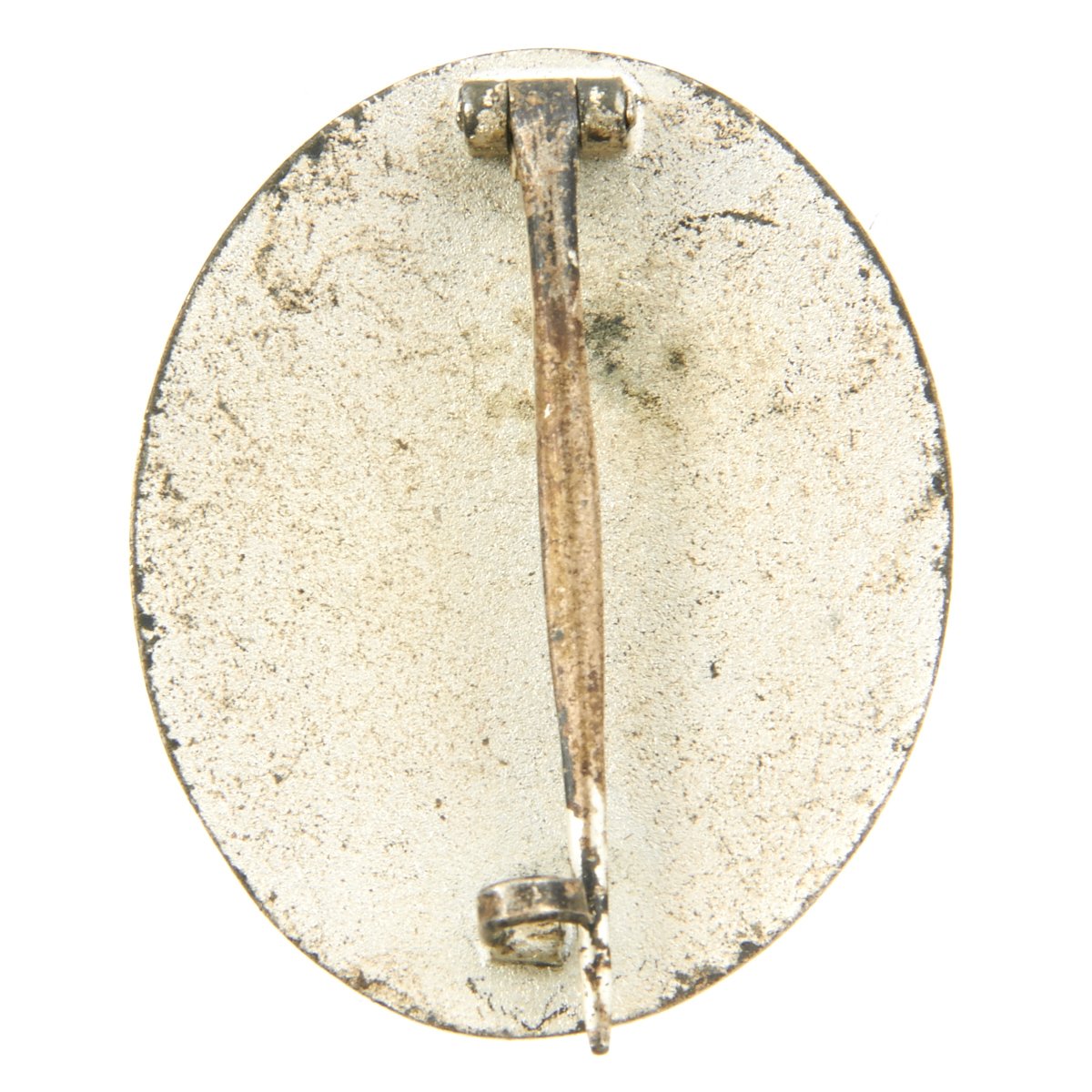German WWII July 20th 1944 High Quality Reproduction Wound Badge Set Original Items
$ 375,00 $ 112,50
Original Items: Only One Set Available. These wound badges were manufactured decades ago with the intention of deceiving collectors to believe they are original. The are accurate down to the weight and makers marks. This set consigns of a gold and a sliver July 20 1944 wound badge.
On July 20, 1944, Colonel Count Claus Schenk von Stauffenberg carried a bomb with a time-delayed fuse inside his briefcase to a meeting at the Wolf’s Lair, AH’s headquarters in East Prussia. Moments after von Stauffenberg excused himself to make his escape, the bomb in his briefcase exploded. AH, von Stauffenberg’s intended target escaped with minor injuries. Four others were killed and 19 were injured.
Quickly apprehended, von Stauffenberg and an estimated 5,000 additional conspirators implicated in the plot were executed or forced to commit suicide; Field Marshall Erwin Rommel was the most prominent. To commemorate his survival of the blast, AH commissioned a special Wound Badge (the German equivalent to the US Purple Heart Medal) to those who were killed or wounded in the assassination attempt.
This special edition of the Wound Badge is immediately recognizable by the date—July 20, 1944, and AH’s signature embossed on the front of the award. Considered by collectors to be the “Holy Grail” of German WWII medals, this Wound Badge is often reproduced. The best counterfeit versions are correct down to the weight and maker’s marks on the back of the award, which make it very difficult to tell the difference between an original or a fake.
The 20 July Wound Badge is based on the common Wound Badge, but the helmet is slightly higher and larger; it also bears the date “20 Juli 1944” and a facsimile of AH’s signature below the helmet and date The 20 July Wound Badges were made in all three grades of black, silver, and gold. All of these wound badges were made by the C. E. Juncker firm and were made out of solid hallmarked silver. Recipients who had already been previously awarded regulation Wound Badges were awarded the 20 July Wound Badge in a higher grade.
Unlike the Wound Badge in Black, the 20 July Wound Badge in Black was not all black. Only the helmet and wreath were black; the background was in silver so that the date and facsimile signature could be seen. The 20 July Wound Badge in gold also had a silver background with the helmet and wreath colored gold. The 20 July Wound Badge in silver has black highlights on the helmet swas, the date, and the facsimile signature. Unlike the standard Wound Badges, these were of two-piece construction.
AH presented the survivors with the special wound badge as well as a unique award document. The first were in a ceremony on 20 August 1944. The four posthumous awards were sent to the recipients’ wives. Although AH had been injured in the bombing, he did not give one of these badges to himself. AH had earned his own Wound Badge (in black) in World War I on 18 May 1918.
The badge replaced the basic 1939 Wound Badge on those persons who were presented the 20 July Badge. It is important to note however that this badge was more a personal gift from AH to those involved, and was intended to be a treasured one-off souvenir of a momentous historical event. Recipients of the 20 July wound badge could have their 20 July wound badges upgraded if they earned higher grades of the Wound Badge. Konteradmiral Hans-Erich Voss eventually had the 20 July Wound Badge in all three grades, earning it in black on 20 July 1944, and having it upgraded twice for subsequent wounds.
Prompt Shipping and Professional Packaging
We provide a variety of shipping options due to our long-running partnerships with UPS, FedEx and DHL. Our warehouse personnel are well trained and will pack the goods according to our exact and precise specifications. Before shipping your items will be thoroughly inspected and secured. Every day, we deliver to thousands of customers in different countries. This is a sign of our determination to become the largest online retailer worldwide. Both Europe as well as the USA have warehouses and distribution centers.
Note that orders containing more than one item will be subject to a processing period that is based to the particular item.
Prior to shipping the items, our staff will carry out an exhaustive inspection of the products you ordered. Today, most orders will be delivered within 48 hours. The estimated delivery time is between 3-7 days.
Returns
The stock is constantly changing. It's not entirely managed by us since we are involved with multiple entities, including the factory and our storage. Therefore, the actual inventory could alter at any time. It is possible that you will not receive your order after the order has been made.
The period of time is 30 days. Unfortunately, if 30 days have passed since you purchased your product, we are unable to provide a refund or exchange.
The item must not be in use and must be in the original packaging. The item must be in the original packaging.
Related products
Uncategorized
Australian WWII Owen MK1 Machine Carbine SMG Custom Fabricated Replica with Sling Original Items
Uncategorized
Uncategorized
Uncategorized
Uncategorized
Uncategorized
Uncategorized
Uncategorized
Uncategorized
Uncategorized
Armored Burgonet Helmet & Polearm from Scottish Castle Leith Hall Circa 1700 Original Items
Uncategorized
Uncategorized
Uncategorized
Uncategorized
Armoured Fighting Vehicles of the World: AFVs of World War One (Hardcover Book) New Made Items
Uncategorized
Uncategorized
Uncategorized
Uncategorized












































































